|
|
Post by nikonbob on Oct 8, 2011 11:45:48 GMT -5
To my eye digital B&W conversions seem OK but quite a few people seem to think that they are not as good as B&W film shots. I'll leave you this one with that in mind or any other aspects you care to mention. Bob 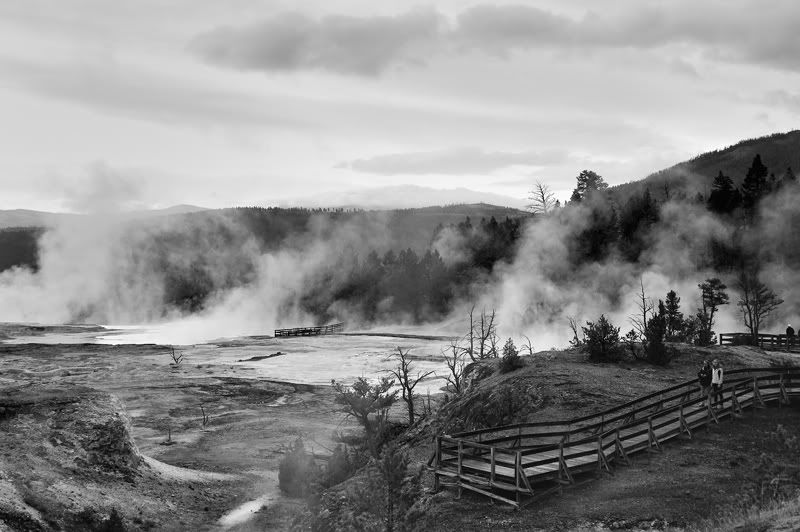 |
|
|
|
Post by olroy2044 on Oct 8, 2011 12:26:50 GMT -5
Bob, to my eyes (which are admittedly aging and somewhat prejudiced  ) digital conversions, as they first come out, look unfinished. I don't know whether or not you tweaked the image any after the conversion. Anytime that I have made a conversion, I wind up tweaking it to make it look like a film image. Bear in mind, however, that my digital experience is limited only to a good point and shoot. Mr. Gene has been my inspiration in BW photography. I try to make my images look like his, without his level of success, however!  I hope you don't mind, but I took the liberty of dropping your photo into my photo-editor (Serif Photoplus X3) and messing with it. I worked the levels, increased the contrast a little, and added a touch of red filter. All of the modifications were very subtle. Here is the result. I don't know if they improved an already excellent image or not. You are the judge!  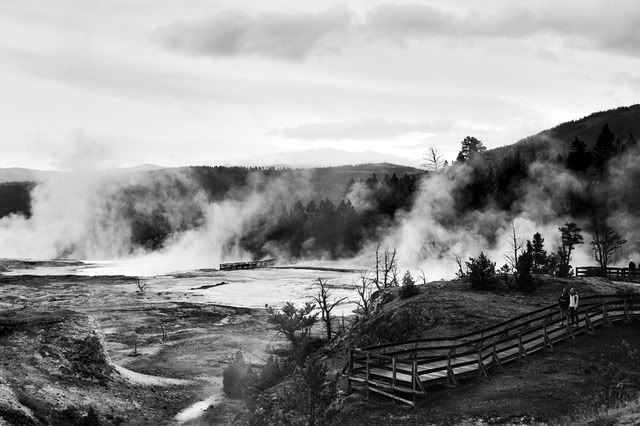 |
|
|
|
Post by nikonbob on Oct 8, 2011 18:02:25 GMT -5
Roy
I have to agree that a straight conversion is only a start point and I did play with it after conversion. Yea, Gene sure knew his stuff alright. Great eye and pp skills. No, I don't mind. Ansel Adams proved to that there is more than one outcome from the same negative. Anyone of which would be correct at the time according to the mood of the artist. At least that is my take.
Bob
|
|
mickeyobe
Lifetime Member
   Resident President
Resident President
Posts: 7,280
|
Post by mickeyobe on Oct 8, 2011 18:23:12 GMT -5
I like both versions.
Unless one resorts to burning and dodging details will often be lost or diminished in the highlights or shadows.
With digital colour I find that details burn out and are lost in the highlights whereas there is a great deal of detail in the shadows that can not be seen until they are lightened.
I tend to underexpose almost all my digital photos in an attempt to retain some highlight detail. I let the shadows take care of themselves when exposing but I lighten them in Photoshop.
It works well for me.
Mickey
|
|
daveh
Lifetime Member
  
Posts: 4,696
|
Post by daveh on Oct 8, 2011 20:01:26 GMT -5
Film manipulates the image. Different B&W films manipulate it different to each other. Even within the same film different results can be obtained by pushing the film speed or using a different developer or filter.
Shooting RAW in digital has the advantage that nothing is applied that can't be removed. The film speed might be set for each shot but it is easy to alter it for the next shot. Even if you shoot in B&W the colour information is there and can be used later if desired.
Film probably still has a better dynamic range, but digital does let you combine several shots relatively easily to give a high dynamic range - HDR. (it is possible also to combine different focus planes in a stack to make it look as if the whole photo is in focus - macro work.)
What seems to me to be the case is that with film more has to be taken care of at the time of taking. Digital differs in that all the changes are done afterwards (at least if you shot RAW). So, yes a digital B&W at first production will often seem less finished than film because you haven't applied that yellow, red, green, orange or whatever filter to darken (or lighten) the sky, foliage or what have you.
I#ve only played around a little with HDR and stacks. I do think the effects are often overdone and spoil rather than improve the picture. However, forty or so years ago some people felt that every B&W print had to be solarised, otherwise it wasn't art.
|
|
|
|
Post by nikonbob on Oct 8, 2011 20:01:35 GMT -5
Mickey I find what you are saying is so true. I have my D700 permanently set to -.3 exposure comp and still at times require more - comp to keep blown highlights to a minimum. the only down side is that shadows get noisier even while retaining detail after lightening in pp. Some day there will be increased dynamic range in digital capture. Here is a good example of the worst conditions I have tried to shoot in. Bob 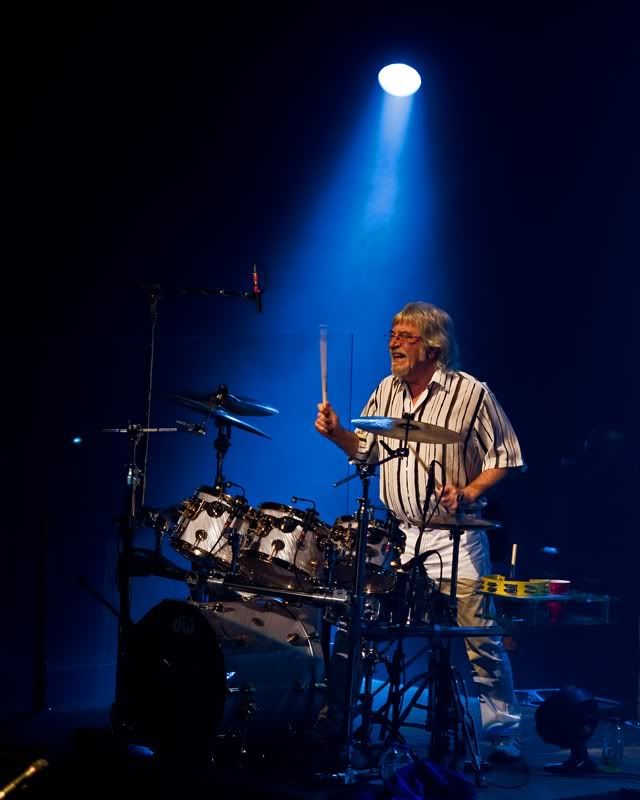 |
|
daveh
Lifetime Member
  
Posts: 4,696
|
Post by daveh on Oct 8, 2011 20:15:43 GMT -5
Bob, excellent photos. My only grouse is that you have saved them without the EXIF so I can't check on any of the details such as "film speed", F-stop, shutter speed etc. I presume your drummer wasn't too high an ISO rating because it looks quite "clean". The shutter speed was not fat enough to prevent a bit of blurring of the drum stick - but the it depends how fast he was twiddling it.
|
|
|
|
Post by nikonbob on Oct 8, 2011 22:36:05 GMT -5
Dave
For the drummer, Moody Blues, I used a D700 in AP on auto iso and 1/125 set as minimum shutter speed and a 70-200 f2.8 VRII.
145mm
F2.8 & 1/125
-0.7 comp ( really -1 as -0.3 is permanently set )
spot meter
iso 640
My first time trying this sort of photography and it was an eye opener for sure.
Bob
|
|
daveh
Lifetime Member
  
Posts: 4,696
|
Post by daveh on Oct 9, 2011 2:42:32 GMT -5
Bob,
It certainly shows the advantage of an f2.8 lens. Imagine it with an f5.6 - two stops slower, so 1) shutter speed becomes 1/30 or 2) film speed ISO 2500. Neither would give anything like as good a result.
I do sometimes compensate by a third of a stop, or more but I have to say it's not always "minus". Backlit subjects, for instance, need "plus" compensation. I tend to leave the exposure on evaluative metering. and just compensate up or down as seems necessary. I tried spot metering at one rugby game (on the basis that the most important part of the action was where the centre of the lens was pointed) but the results were all over the place.
Dave.
|
|
|
|
Post by nikonbob on Oct 9, 2011 6:46:24 GMT -5
Dave
I just found that under normal circumstances the evaluative/matrix metering, on my camera errs to overexposing and blowing highlights. Yup, when I look at backlit subjects I do add exposure, if I remember too. I thought matrix metering was great with C41 film and it was but with digital it is just not quite as spot on. In this case I was having more inconsistent results with matrix metering than spot. This was the only time I have really used spot metering. I would not have thought that the type of lighting at a sports event would as whacky as at a concert but then I don't do sports. I don't think metering has been made easy by digital compared to C41 film.
Bob
|
|
|
|
Post by olroy2044 on Oct 9, 2011 21:22:35 GMT -5
D--n, that's a nice shot, Bob! Whatever you did, it was right!
Roy
|
|
|
|
Post by nikonbob on Oct 9, 2011 22:14:29 GMT -5
Roy Thanks a heap, sometimes I get lucky. Here are two more for you. Bob 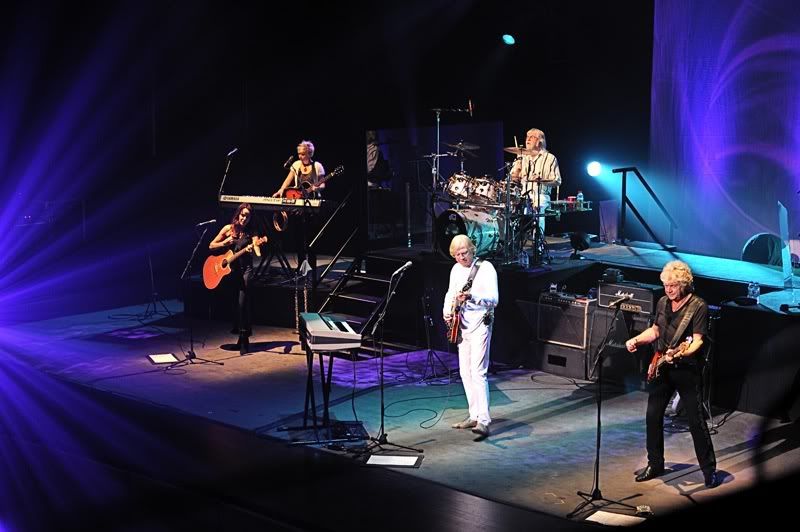 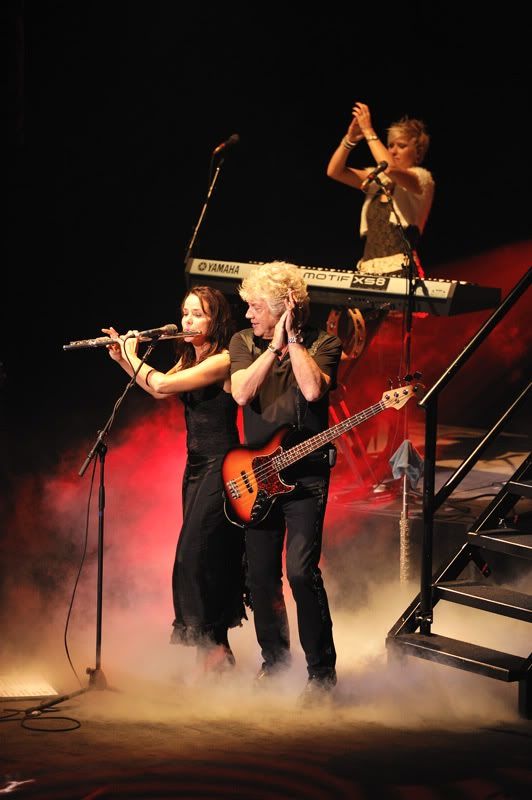 |
|
daveh
Lifetime Member
  
Posts: 4,696
|
Post by daveh on Oct 14, 2011 16:14:43 GMT -5
Bob, Super.
I've been looking without success, for my photos taken at a Chris Rea concert on a 2mp Panasonic FZ1 a few years ago.
|
|